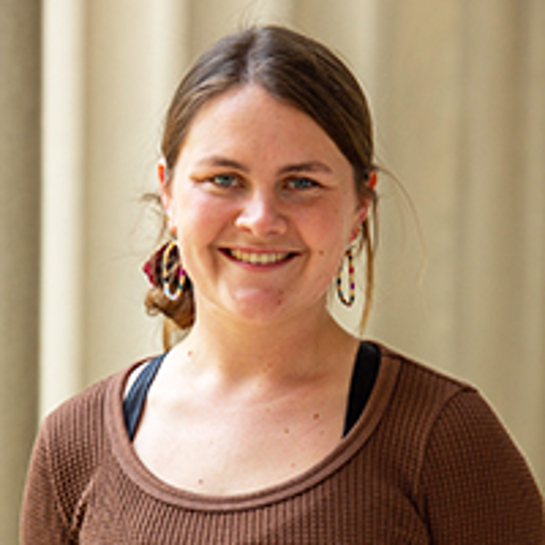MIT SIAM Student Chapter Hackathon Utilizes Open-access Energy Data
During the first weekend in February, undergraduate and graduate students from the greater Boston area came together at the Massachusetts Institute of Technology (MIT) to take part in the Global Energy Monitor (GEM) Hackathon. The event was co-hosted by Bianca Champenois, president of the MIT SIAM Student Chapter, and Sanjana Paul, executive director of Earth Hacks. Hackathons generally serve as programming contests during which participants work in small groups to teach each other new skills and develop interesting projects that pertain to a certain theme, all while competing against other teams for prizes. The projects can take many forms, ranging from the creation of code repositories and website mockups to new datasets and hardware prototypes. The GEM Hackathon encouraged participants to utilize the open-access energy data in the GEM databases to tackle questions about worldwide energy data availability and estimate solar resource potential.
Students chose between two open-ended challenge statements and applied their mathematics, modeling, programming, mapping, visualization, and storytelling skills to develop feasible solutions. The first challenge asked attendees to design a tool that would allow individuals from anywhere in the world to learn about the power plants in their vicinity, and the second challenge tasked them with analyzing and combining multiple datasets to compare the potential of solar power against existing real-world implementations. The assignments were intentionally broad so that students could use their creativity to generate new perspectives. Represented schools at the GEM Hackathon included MIT, Bentley University, Boston University, Brandeis University, Bunker Hill Community College, Northeastern University, and Simmons University. Because the backgrounds and majors of participating students varied widely, team members were able to exchange perspectives and apply a variety of skill sets in an interdisciplinary setting.
The two-day event, which took place during the Independent Activities Period at MIT, included workshops and talks to support students’ projects and experiences. To wrap up the first day of festivities, Hackathon organizers created a custom version of GeoGuessr—a popular geography game wherein players guess the locations of various Google Street View images—that focused on power plants around the world. During this activity, participants learned about different types of power plants and observed their physical appearances in real life. Exploring new landscapes via Google Street View also offered a fresh perspective on the size and impact of global energy projects — and gave hackers a break from project development to socialize and have some fun.
Another session familiarized students with Social Explorer: a tool that provides access to U.S. demographic data. Alejandro Paz, a Librarian for Energy and Environment at MIT, explained the history and mechanics of the tool and gave a demonstration. He also overviewed all of the resources and datasets that are available to students via MIT’s libraries.
The GEM Hackathon was further bolstered by mentor support, including that of Ted Nace (founder and executive director of GEM) and Wesley Hamilton (senior software developer at PTC and former member of the University of North Carolina, Chapel Hill SIAM Student Chapter). Hamilton helped to host a Datathon4Justice at the University of Utah in 2021 and thus brought valuable experience to the MIT event. Students consulted the mentors for assistance and support throughout the course of the Hackathon.
The winning team, named the “Power Rangers,” created a website that summarizes the landscape of energy projects in a region of interest. Their work built upon an existing codebase that was initially intended to map the locations of Chipotle restaurants in a given neighborhood, though the students added many new features that incorporated further data analysis and insights. GEM intends to stay in touch with all participants to oversee the implementation of their projects beyond the prototyping phase.
At the event’s conclusion, students returned to their studies with newfound confidence in their ability to program with the Structured Query Language, employ the pandas Python library, utilize the Google Maps application programming interface, and perform regressions. Overall, the GEM Hackathon served as a great reminder of the importance of computational mathematics and data science in climate and environmental-based projects.
About the Authors
Bianca Champenois
Ph.D. candidate, Massachusetts Institute of Technology
Bianca Champenois is a Ph.D. candidate in the joint mechanical engineering and computational science/engineering program at the Massachusetts Institute of Technology (MIT). Her research involves data-driven fluid mechanics for ocean and atmospheric modeling. Champenois is also president of the MIT SIAM Student Chapter.

Sanjana Paul
Co-founder, Earth Hacks
Sanjana Paul is the co-founder and executive director of Earth Hacks: an environmental hackathon organization. She is currently a graduate student in environmental policy and planning at MIT. Paul holds bachelor’s degrees in electrical engineering and physics and has worked on projects that range from atmospheric science software engineering to building decarbonization policies at the municipal level.
Stay Up-to-Date with Email Alerts
Sign up for our monthly newsletter and emails about other topics of your choosing.








